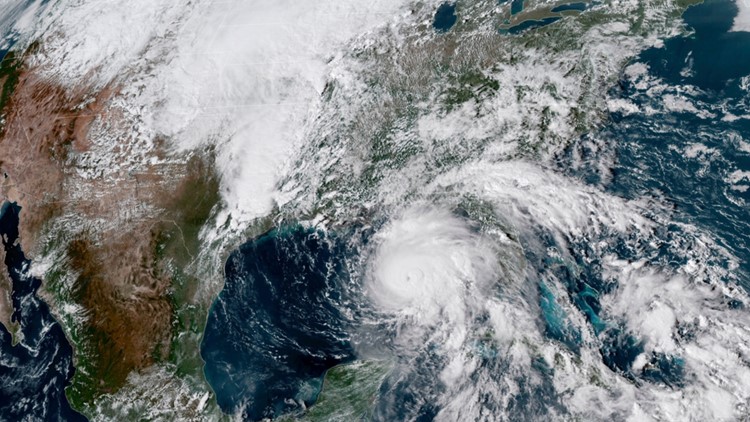Hurricane Ida made landfall along the Louisiana Gulf Coast Sunday, coming in just shy of becoming a Category 5 storm. The National Hurricane Center had sustained winds of 150 mph when it reached land at Port Fourchon, La., early Sunday afternoon.
A Category 5 has maximum sustained winds of at least 156 mph, according to this National Hurricane Center report from May 2021, and the effects can be devastating.
"People, livestock, and pets are at very high risk of injury or death from flying or falling debris, even if indoors in manufactured homes or framed homes. Almost complete destruction of all manufactured homes will occur, regardless of age or construction," the report said.
Prior to the 2021 Atlantic hurricane season, four storms have made landfall in the U.S. as a Category 5 but a couple weren't given that top designation until months or years later.
1935: Labor Day Hurricane
This was before the U.S. began naming storms in the 1950s. The Labor Day Hurricane struck on Sept. 2, 1935. The weather service said, at its peak, winds hit 200 mph.
More than 400 people in the Florida Keys were killed, according to the South Florida Sun Sentinel. That included 259 World War I veterans. They were living in Civilian Conservation Corps camps while building the Overseas Highway. The train sent to rescue them was sept off the tracks by storm surge.
1969: Hurricane Camille
Camille struck the Mississippi Gulf Coast on Aug. 17, 1969, the National Weather Service said. It was the second most intense storm to hit the U.S. behind the Labor Day hurricane.
"The actual maximum sustained winds of Hurricane Camille are not known as the hurricane destroyed all the wind-recording instruments in the landfall area," the weather service said. But winds along the coast were recorded at about 175 mph and gusts reached 100 mph in southern Mississippi.
A storm surge of 24.6 feet was reported in Pass Christian, Miss.
A total of 143 people were killed along the gulf coast. But as Camille tracked northeast, it led to a burst of heavy rains and flash flooding that killed 113 more.
"The heaviest rains along the Gulf Coast were about 10 inches," the weather service said. "However, as Camille passed over the Virginias, it produced a burst of 12 to 20 inch rains with local totals of up to 31 inches. Most of this rain occurred in 3 to 5 hours and caused catastrophic flash flooding."
1992: Hurricane Andrew
Andrew hit South Miami-Dade County on Aug. 24, 1992, with maximum sustained winds of 165 mph at landfall, the weather service said. But that determination wasn't made until 10 years after it struck and further analysis was done. It was initially deemed a Category 4.
Until Hurricane Katrina in 2005, it was the most expensive natural disaster in U.S. history at $26 billion. It's since been surpassed by hurricanes Harvey, Maria and Irma in 2017 and Sandy in 2012.
Sixty-one people were killed due to Andrew. In the hard-hit community of Homestead, only nine of the 1,176 mobile homes survived, according to the weather service.
2018: Hurricane Michael
Michael struck the Florida Panhandle on Oct. 10, 2018, with sustained winds of 160 mph and stayed at hurricane strength as it moved into Georgia. It initially was ruled a category 4, but was upgraded to a category 5 six months later after a detailed post-storm analysis.
Those affected said the change didn't make much of a difference in terms of the damage it brought.
"Whether it was a 5 or a 4, it really isn’t relative to anything for most of us who are here. It’s just another number,” Al Cathey, mayor of Mexico Beach, Fla., said at the time.
Michael was directly responsible for 16 deaths and about $25 billion in damage in the U.S. It was also the strongest hurricane landfall on record in the Florida Panhandle.
Six months after Michael hit, Mexico Beach only had about 400 people living there -- down from 1,200 residents before the storm.
The Associated Press contributed to this report.



